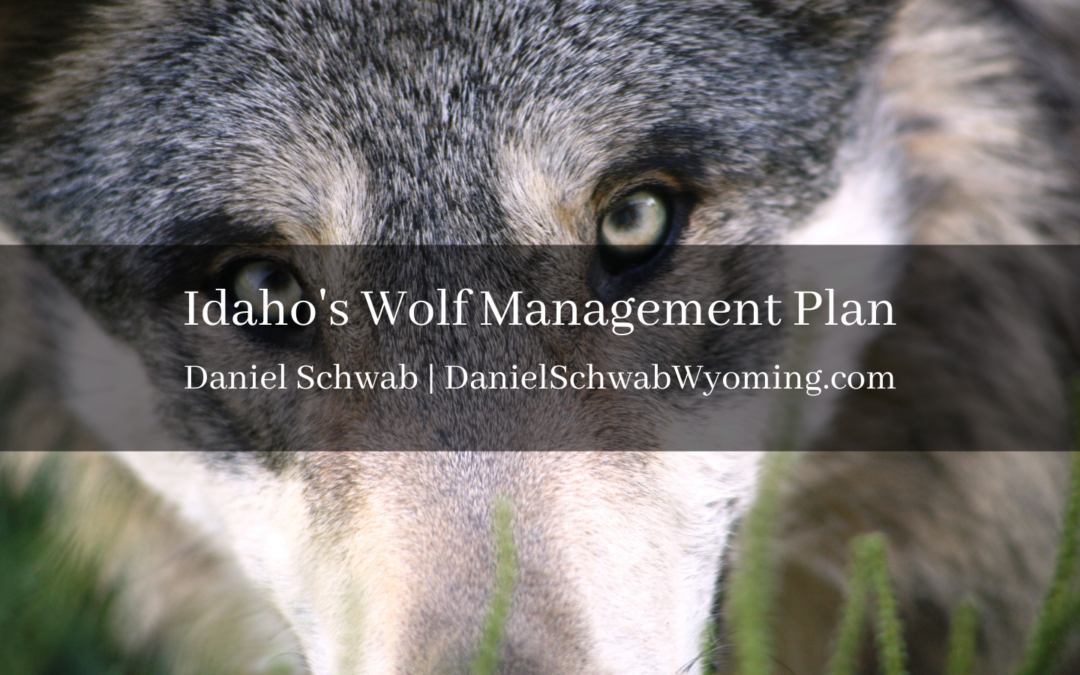The Idaho Fish and Game Commission unanimously adopted a wolf management plan instructing the state to gradually reduce the wolf population from about 1,340 to 500 animals over the next six years.
The new wolf-management plan was introduced at a Commission meeting on January 26. It calls for incentivizing more hunting and trapping of wolves and loosening Idaho’s wolf hunting and trapping policies.
The goal is to keep the wolf and big game, mostly elk, populations balanced to minimize conflict with livestock by upping harvest pressure.
Reaching 500 wolves would also mark a return to Idaho’s minimum recovery goal for wolves. In 2009, the U.S. Fish and Wildlife Service set the management objective when wolves in the northern Rocky Mountains were pulled from the federal Endangered Species Act and returned to Idaho, Montana, Oregon, Washington, and Wyoming, for management.
The Fish and Wildlife Service’s delisting rule also laid out minimum recovery goals of 400 wolves for Montana and 200-300 for Wyoming, stipulating that each state in the Northern Rockies region maintain at least 150 wolves and 15 breeding pairs to keep gray wolves off the endangered species list.
Fish and Game’s most recent peak-population estimate is based on game camera surveys from summer 2022. According to this, Idaho had a maximum of 1,337 wolves. That’s a 13% decrease from 2021, when over 1,500 wolves roamed the state, but still 840 more than required.
“With improved population estimation, it is clear that Idaho’s population has been well above this objective since delisting. During 2019-2021, Idaho’s wolf population has fluctuated around 1,270 animals during the annual cycle of reproduction and mortality,” the plan states.
Fish and Game Public Information Supervisor, Roger Phillips, stated that reducing the wolf population would benefit elk populations. Especially those affected most by wolf predation in Idaho’s Panhandle, Lolo, Selway, Middle Fork, and Sawtooth regions.
“Currently, Idaho has abundant and healthy elk populations statewide, however herds are unevenly distributed, and eight of Fish and Game’s 28 elk management zones are below objectives,” Philips stated. “In five of those zones, Fish and Game biologists have determined that predation and other factors are limiting herd growth.”
According to Leon Burman, senior wildlife technician with Fish and Game’s Magic Valley office, statewide wolf harvest has fluctuated between 400-500 wolves per year and has continued to increase since 2013.
In the Wood River Valley, fewer than 20 wolves have been hunted or trapped on an annual basis over the past decade, contributing to a “relatively small” portion of the statewide total, he said.
Burman stated that 16 wolves were hunted in the broader Magic Valley Region last year, up from 11 in 2021 and 12 in 2020. The zone includes Blaine, Cassia, Lincoln, and Twin Falls counties.
Fish and Game documented a total of 396 wolves killed in 2022, according to wolf mortality records obtained by the Express. That figure is less than any year in recent times and also 20% less than 2021, when more than 495 wolves were trapped or hunted.
Fish and Game Director, Ed Schriever, said that the intent of Fish and Game is not to “manage the wolf population to the bare minimum recovery threshold,” but to “manage the wolf population very consistently with the federal delisting rule written under the Obama administration for what will work on an occupied landscape where the public has other values with wildlife.”
Commissioner Ebert reminded everyone that the goal of the wolf management plan is to create a healthy balance, not to eradicate wolves, and that has never been the intention.


